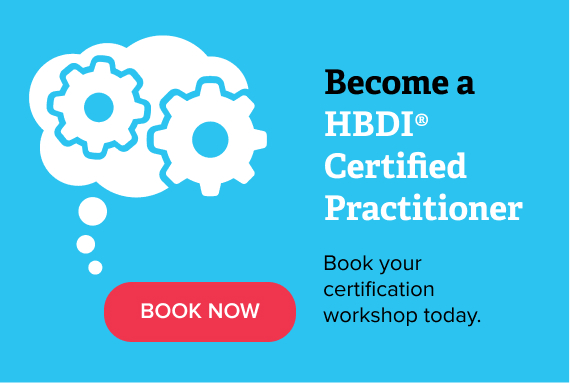Feeling seen, heard, and appreciated differs from person to person. Just as people have unique thinking preferences, they also have unique ways in which they like to be appreciated for a job well done. The nuance of understanding how an individual feels valued in the...
Transforming Workplace Learning: Embrace Learning in the Flow of Work (LITFOW)
I recently spoke at two conferences — a learning and development Leadership Summit in Auckland, and the HR Summit in Melbourne. Both talks were about the same topic - LITFOW. Learning in the Flow of Work. LITFOW can bring immense benefits to any...
5 Reasons to Use HBDI® for Teamwork
The success of almost any organisation relies on effective teamwork. However, teamwork is not always easy, and it is not unusual for many teams to encounter roadblocks along the way. Whether it's a conflicting communication or thinking style, or different ways to...
How to Create a Team Environment that Promotes Effective Problem Solving Strategies
It is without a doubt that problem-solving is a crucial component of any successful team, and for an organisation to achieve its objectives, an environment that promotes efficient problem-solving strategies is vital. By incorporating diverse perspectives, teams can...
Boost Your Professional Impact: Tips to Improve Your Non-Verbal Communication in the Workplace
Albert Mehrabian's research found that words contribute only 7% to the impact of communication in certain situations, while tone of voice (38%) and nonverbal cues (55%) play a larger role. Many cite this statistic, however, his research focused on feelings and...
Neurodiversity, Cognitive Diversity and where the HBDI® fits
We are often asked how the HBDI and Whole Brain® Thinking relate to neurodiverse groups. To answer this question, we need to distinguish the difference between neurodiversity, neurodivergence, neuro-types and cognitive diversity. What is Neurodiversity? Neurodiversity...
Fostering a positive workplace culture: Best practices for a thriving and inclusive work environment
A positive workplace culture can help improve employee satisfaction, engagement, and productivity, while also reducing turnover and absenteeism. But creating a positive workplace culture is not something that happens overnight – it requires ongoing effort and...
Boosting employee engagement: Strategies for a more productive and motivated workforce
Employee engagement is a critical factor in organisational success. It refers to the level of emotional commitment that employees have to their work and their organisation. Engaged employees are more productive, motivated, and likely to stay with their employer for a...
What is cognitive diversity?
It is not uncommon for people to clash with their colleagues at work. This can often be due to conflicting opinions, different levels of experience or knowledge, miscommunications, and a range of other issues. It’s important to remember that everyone has different...












